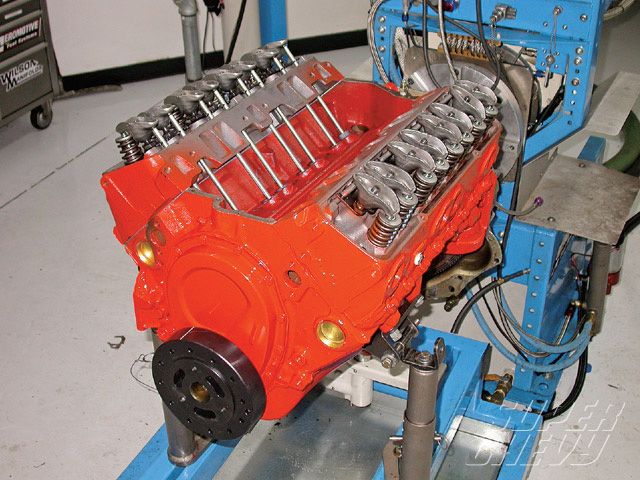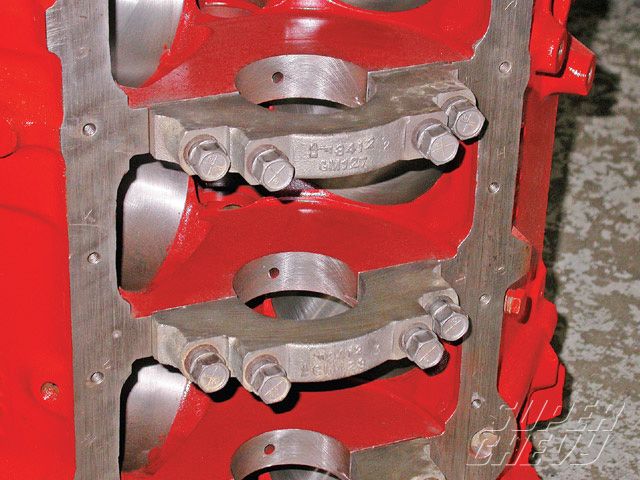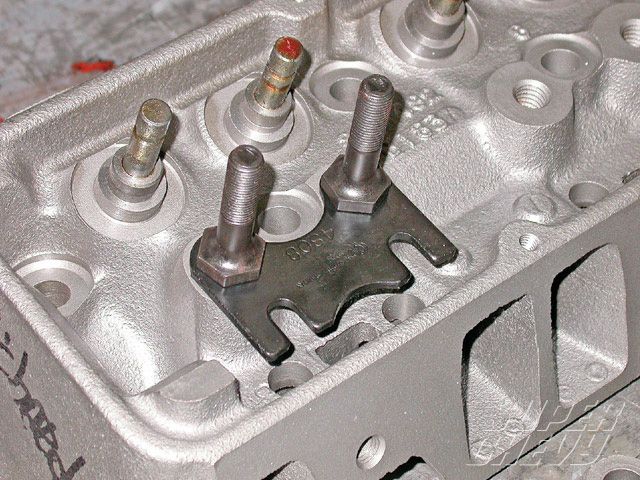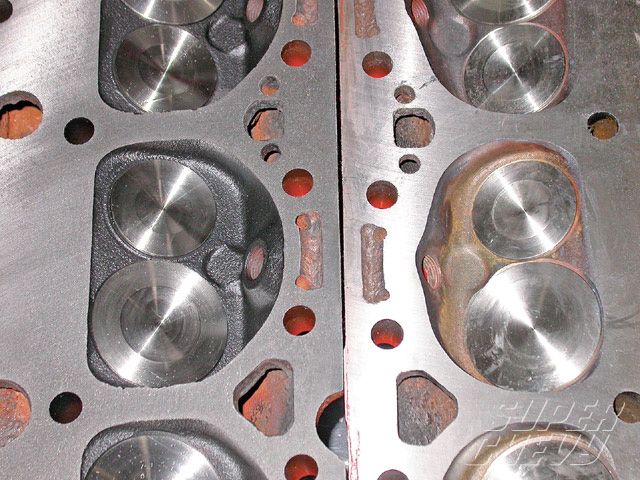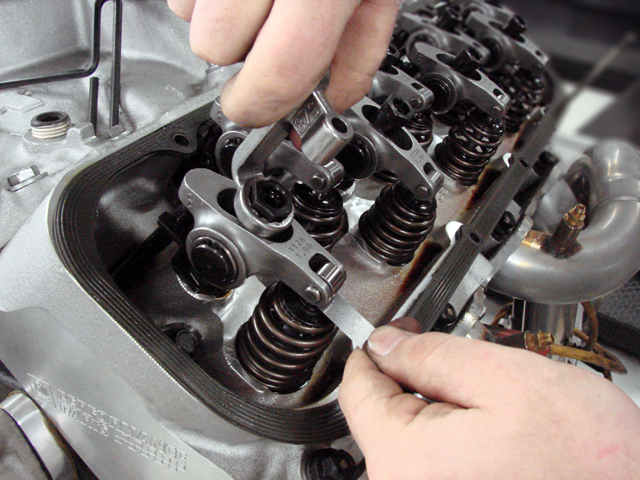Neo-Retro 327 - Modern V-8 Power with 327 Looks
Build a Small-Block With Yesteryear's
Look and Today's Performance
A 400hp Twist On L79 327ci Flower Power
From the February, 2009 issue of Rod & Custom
By Terry McGean
Photography by Terry McGean
Link to Origional Article
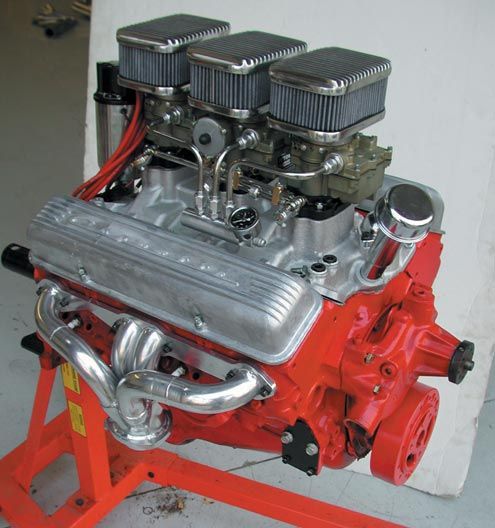
Despite the fact that a 350 crate-engine package is one of the most popular engine selections for street rods today, the little V-8 was also the hot ticket back in the day, almost as soon as it hit the streets. Nobody can argue with the nostalgic vibe generated by a 283 or 327 dressed out with finned aluminum valve covers, multiple carbs, a chrome oil-fill tube, and all the other little touches that scream 1959.
Today, the best part may be that with the right parts selection, you can take the period-correct appearance desired for a traditional hot rod and combine it with over 40 years of engine technology to create a reliable street-driven V-8 that makes more power than some full-race versions from the glory days.
We set out to achieve just that by building a small-block with the right look, but all the updates we could bolt on. We attempted to use items that could be concealed so as not to disturb the appearance, but took our testing in stages, starting with the early-60s vibe and making changes from there. The span of the power increases was dramatic, yet the final product was one that could easily live in a road-going rod, one that could garner as much attention at the drags as it would at the local cruise night.
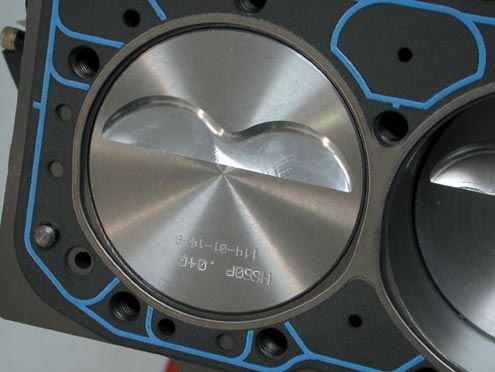
Even a basic rebuild of the short-block can include updates. For example, we had ours fitted with hypereutectic pistons instead of either the basic cast versions used in standard factory small-blocks or the forged slugs found in some high-performance engines. Both are available, but the hypereutectic found in nearly all factory-produced engines manufactured today offers more strength than a cast piston and can be fitted to the cylinder walls with close tolerances due to its minor thermal-expansion rate. Forged pistons, though stronger, expand more than cast or hypereutectic slugs, and therefore must be installed with more clearance; this often results in noisy operation, particularly during cold starts.
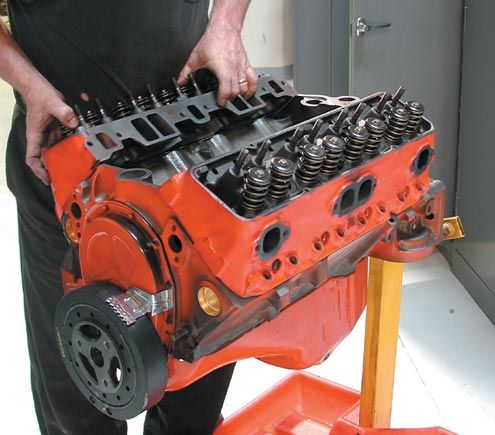
Steve Brule of Westech Performance Group in Mira Loma, California, handled the final assembly of our 327. The cylinder heads we're starting with are 64 Chevy double-hump castings with 64cc combustion chambers and 1.94/1.50-inch valves. We had them checked and rebuilt by JMS Racing Engines in Monrovia, California; this included the valve-spring upgrade and a conversion to modern positive-control valve seals. For years, these were the heads to have for a hot small-block, surpassed only by the 2.02/1.60-inch valve versions, often referred to as fuelie heads. With the pistons we're using, compression should be about 10.0:1.
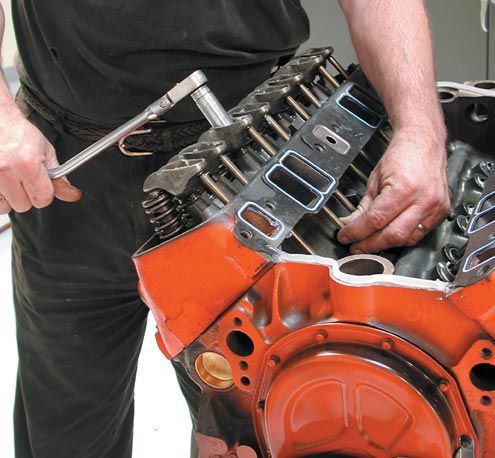
Brule installs the rocker arms and sets the valves. For the first combination, we used stock-type stamped-steel rocker arms, though we chose to go with a fresh set, available from Comp Cams. Well-used rockers are often worn at the tips and at the fulcrum, where the ball stud makes contact. These rockers use the stock 1.5:1 ratio and will work with the Comp Cams flat-tappet hydraulic cam and lifter combo that we had Dougan's install during the short-block rebuild. The cam is a replacement grind for the old L-79 327ci/350-horse engine (222-degree duration at 0.050-inch lift, 0.447-inch lift).
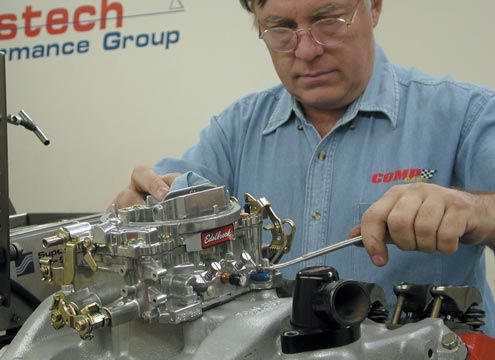
Westech's John Baechtel tops the engine with a 64 cast-iron four-barrel intake manifold, originally installed on a 300hp 327 from a 64 Corvette. Again, this is standard performance fare for an early-60s small-block. The intake is then fitted with an Edelbrock Performer 625-cfm carb. The Performer is available brand-new but is dimensionally similar to the Carter carbs originally used with this intake, in fact, this is one of the few applications that requires the use of the inside mounting holes on the carb feet.
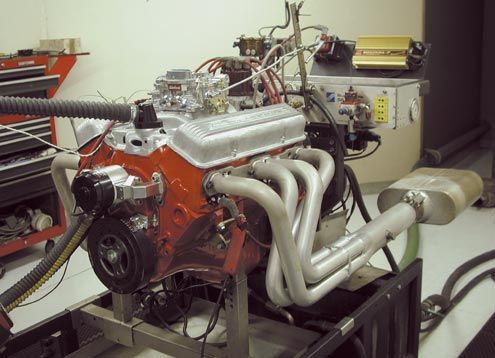
Our 327 was finished off with a set of early Corvette aluminum valve covers, still available from GM Performance Parts. Non-nostalgia items necessary for the dyno test included a set of Sprint Car style headers, an electric water pump, and a large late-model-style balancer. In this trim, the 327 generated 300 hp at 5,400 rpm. At 3,500 rpm, where the pull began, torque was 356 lb-ft but had already passed its peak.
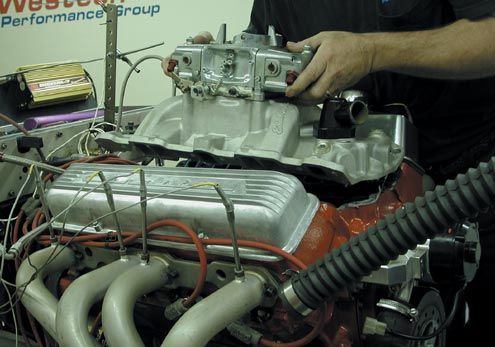
Before moving on, we decided to retest the engine with a proven induction combo. The 64 iron intake certainly wasn't helping the engine's output very much, and we thought it might benefit from a few more cfm as well. We swapped an Edelbrock Performer RPM intake and a Demon Carburetion 750-cfm mechanical-secondary carb on and ran it again. This time we saw a best of 334 hp at 5,500 rpm, and 363 lb-ft of torque, now occurring at 4,300 rpm. This induction combo would look way out of place on a traditional car, but we wanted to know what we were giving up for appearances.
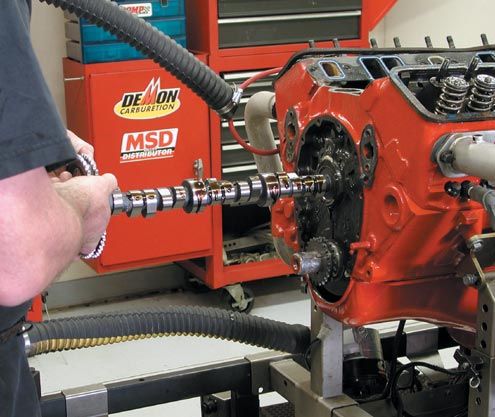
Next, it was time to upgrade the camshaft. Cam swaps are a common part of hot rodding, and our 350-horse factory grind, though respected in the 60s, is actually rather tame. Instead of simply swapping in a bigger cam, though, we used the opportunity to take advantage of roller-cam technology. True, rollers existed in the 60s, but they were solid-lifter designs intended for racing.
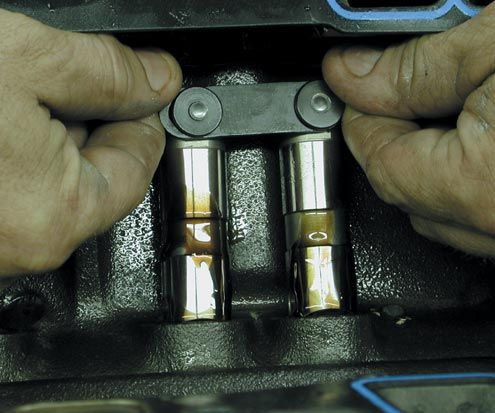
Our Comp Cams Xtreme Energy 282HR-10 cam kit uses a steel roller cam and roller hydraulic lifters. The lifters are designed to drop into any small-block and are aligned with a tie bar linking each intake/exhaust pair. The roller design doesn't simply reduce friction; it also allows more flexibility in profile design. The grind features 230/236 degrees duration (intake/exhaust) at 0.050-inch lift and 0.510/0.520-inch lift on a 110-degree lobe separation angle.
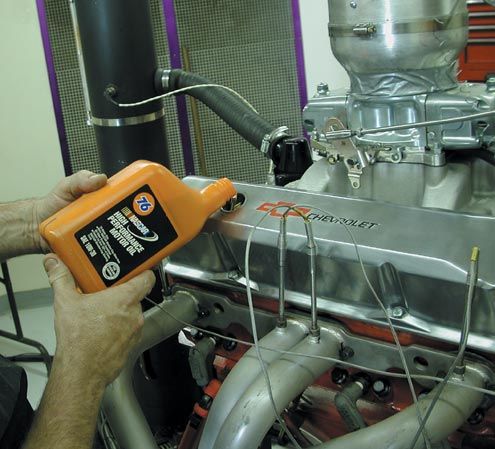
Brule fills the crankcase with fresh Unocal 76 10W30 oil before making the next round of pulls. Moments later, the 327 made a whopping 396 hp at 6,000 rpm and 392 lb-ft at 4,500 rpm. Even at 3,000 rpm, where the pull began, the engine was already making 370 lb-ft. Idle quality was choppy, but we could still pull it down to 800 rpm. A street rod with this cam would sound very healthy and still have enough vacuum to power a brake booster.
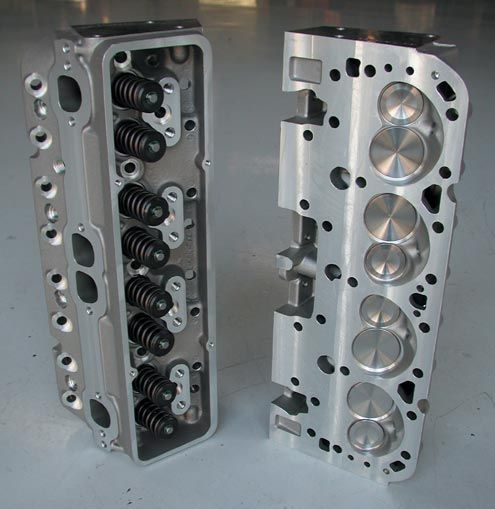
Next, we pulled out the big guns. Many engine builders agree that the key to horsepower lies in the cylinder heads, and ours were nearly 40 years old in design. We decided to step up to modern technology and procured a set of Trick Flow aluminum 23-degree heads. These are available through Summit Racing, and feature 2.02/1.60-inch stainless valves and 64cc combustion chambers, along with a modern fast-burn chamber design and high-performance valve springs and retainers. They're ready to go out of the box for $895, including the necessary guide plates, rocker studs, and hardened head-bolt washers. Plus, they accept any traditional small-block intake manifold and perimeter-bolt valve covers. The Trick Flow heads are also available with larger valve springs, CNC-machined chambers, and 72cc chambers.
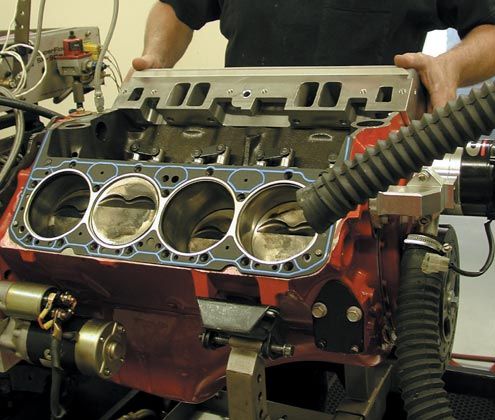
The Trick Flow heads were installed with a fresh set of Fel-Pro gaskets, and the Edelbrock Performer RPM manifold and Demon 750 carb were reinstalled along with the Comp Cams roller rocker arms. With this combination, the engine made 426 hp at 6,100 rpm and 400 lb-ft at 4,600 rpm. At 3,000 rpm, the 327 was grunting out 378 lb-ft of torque enough to shove any rod along at a high rate of acceleration. As a result of the fast-burn combustion chambers, the Trick Flow heads like a little less total timing we ran 34 degrees instead of the 36 used with the Chevy heads. This reduces the need for high-octane fuel, even with higher compression ratios. In fact, all of our tests were performed using Unocal 76 92-octane pump gas without any problems.
Results
- 10.0:1 compression.
- 64cc Trick Flow aluminum heads with 2.02/1.60 valves.
- Edelbrock Performer RPM intake and a Demon Carburetion 750-cfm mechanical-secondary carb.
- Comp Cams Xtreme Energy 282HR-10 cam with 230/236 degrees duration (intake/exhaust) at 0.050-inch lift and 0.510/0.520-inch lift on a 110-degree lobe separation angle.
- 426 hp at 6,100 rpm and 400 lb-ft at 4,600 rpm.
